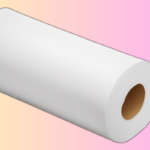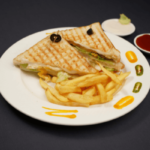
Introduction
Roaster ovens are multipurpose cooking devices that have become essential in numerous homes. They are especially useful when it comes to keeping food warm, which is crucial for maintaining both the flavor and safety of your dishes. This blog post will guide you through the process of using a roaster oven to keep your food warm, ensuring your meals are served at the perfect temperature.
Brief Overview of Roaster Ovens
A roaster oven is a countertop appliance designed to roast, bake, and cook food. It operates similarly to a conventional oven but is more portable and often more energy-efficient. Roaster ovens come with a variety of features that make them ideal for keeping food warm, such as adjustable temperature settings and insulated lids.
Significance of Maintaining Proper Food Temperatures.
Maintaining the correct temperature is essential for both food safety and quality. Keeping food warm without overcooking it prevents bacterial growth and ensures that the texture and flavor of the food are preserved.
Understanding Your Roaster Oven to keep food worm
Key Components and Features
Heating Element
The main source of heat in the appliance is typically the heating element, which is generally situated at the base. It ensures an even distribution of heat to cook the food thoroughly. The efficiency and positioning of the heating element are crucial for ensuring that all parts of the food receive consistent heating.
Removable Pan
The removable pan is the insert where food is placed. It is typically designed to be easy to clean and may be coated with a non-stick surface to prevent food from adhering. The removable nature of the pan allows for convenient serving and cleaning, making the cooking process more straightforward.
Lid Cover
The cover is insulated to preserve the temperature inside the cooking space. It traps heat and moisture, contributing to consistent cooking results. The lid is typically clear, enabling you to observe the cooking process without lifting it, thereby preserving a consistent cooking atmosphere.
Temperature Control
The temperature control option enables you to customize and regulate the heat to meet the exact needs of the dish you are cooking. This precision helps in achieving optimal cooking results, whether you need a low simmer or a high sear. Temperature control is essential for versatility, enabling the appliance to handle a wide variety of cooking tasks efficiently.
Basic Operation Principles
- Plug in the roaster oven and set the desired temperature using the control knob.
- Allow the oven to preheat before adding food to ensure even heating.
Preparing the Roaster Oven to Keep Food Warm
Preheating the Oven
Ensuring a steady temperature requires the important step of preheating. Set the roaster oven to the required temperature for keeping food warm, usually between 150°F and 200°F (65°C to 93°C).
Ideal Temperature Settings to Keep Food Warm
Most roaster ovens have a “Warm” setting, typically around 150°F to 200°F. This temperature range is perfect for maintaining food safety without causing it to continue cooking.
Food Preparation Tips
Suitable Types of Food for a Roaster Oven
- Meats (e.g., turkey, ham)
- Casseroles
- Vegetables
- Soups and stews
Pre-Cooking and Safe Handling Practices
- Cook food thoroughly before placing it in the roaster oven.
- Utilize a food thermometer to verify that the food has achieved a safe internal temperature.
- Handle food with clean utensils to avoid contamination.
Keeping Food Warm in the Roaster Oven
Step-by-Step Guide to Placing and Arranging Food
- Warm Up the Roaster Oven: Start by setting your roaster oven to the needed temperature and allowing it to preheat. This step ensures that the oven is at the correct heat level when you are ready to cook, allowing for even cooking and optimal flavor.
- Add Water for Moisture: Place a small amount of water at the bottom of the removable pan. As the water heats up, it will produce steam, which will help maintain the moisture in the food during the cooking process.
- Arrange the Food Evenly: Carefully place the food in the pan, arranging it in an even layer. Ensure that there are spaces between the pieces of food to enable proper air circulation. This not only guarantees uniform cooking but also prevents the food from clumping together and preserves its tenderness.
Monitoring Food Temperature and Maintaining Quality
- Employ a meat thermometer to consistently monitor the food’s temperature.
- Stir soups and stews occasionally to distribute heat evenly.
Tips for Preventing Overcooking or Drying Out
- Cover food with foil to retain moisture.
- Use the lowest “Warm” setting if the food will be kept in the oven for an extended period.
Serving Food from a Roaster Oven
Best Practices for Transferring and Serving Warm Food
- Use oven mitts to handle the hot removable pan.
- Transfer food to serving dishes promptly to maintain temperature.
Using the Warm Feature During Serving Events
- Keep the roaster oven on the “Warm” setting and replenish food as needed.
- Use the lid to cover the food when not being served to retain heat.
Cleaning and Maintenance
Proper Cleaning Techniques for a Roaster Oven
- Disconnect the appliance from the power source and wait until it has cooled down entirely.
- Remove the removable pan and wash it with soapy water.
- Clean the inside and outside of the oven using a moist cloth.
Guidelines for Prolonging the Lifespan of Your Appliance
- Regularly check and clean the heating element.
- Keep the roaster oven in a dry location to avoid rust and deterioration.
Conclusion
Roaster ovens are invaluable tools for keeping food warm, especially during large gatherings and events. By understanding how to use and maintain your roaster oven effectively, you can ensure your food stays delicious and safe to eat. Ensure you preheat, keep an eye on temperatures, and adhere to proper cleaning protocols to achieve optimal results.
For those who frequently entertain or cook large meals, mastering the use of a roaster oven will undoubtedly elevate your culinary game. Happy cooking!
FAQ:
Q: What is a roaster oven?
A: A roaster oven is a versatile kitchen appliance that functions similarly to a traditional oven, but it is more compact and typically countertop-friendly. It is designed to roast, bake, cook, and keep food warm without taking up the space of a full-sized oven.
Q: What are the methods to maintain food warmth in a roaster oven?
A: To keep food warm in a roaster oven, set the temperature to a low setting, usually between 150°F and 200°F (65°C to 93°C). Place the food in appropriate cookware or directly in the roaster pan, cover it with the lid, and periodically check the temperature to ensure it stays in the safe range for consumption.
Q: Can you use a roaster oven for large gatherings?
A: Yes, a roaster oven is perfect for large gatherings. Its sizeable cooking capacity allows you to prepare and keep large quantities of food warm, making it an excellent tool for parties, holiday dinners, and other events where you need to serve many guests.
Q: Is it safe to leave food in a roaster oven for several hours?
A: Yes, it is safe to leave food in a roaster oven for several hours if the temperature is maintained above 140°F (60°C) to prevent the growth of harmful bacteria. Make sure the lid is securely placed to retain heat and moisture, and occasionally check to ensure the temperature remains consistent.
Q: Which kinds of food can be maintained at a warm temperature in a roaster oven?
A: A roaster oven can keep a wide variety of foods warm, including meats, vegetables, casseroles, sauces, and even desserts. It’s a versatile appliance that adapts well to different types of dishes, making it an essential tool for any kitchen.
As an Amazon Associate, I earn from qualifying purchases.



